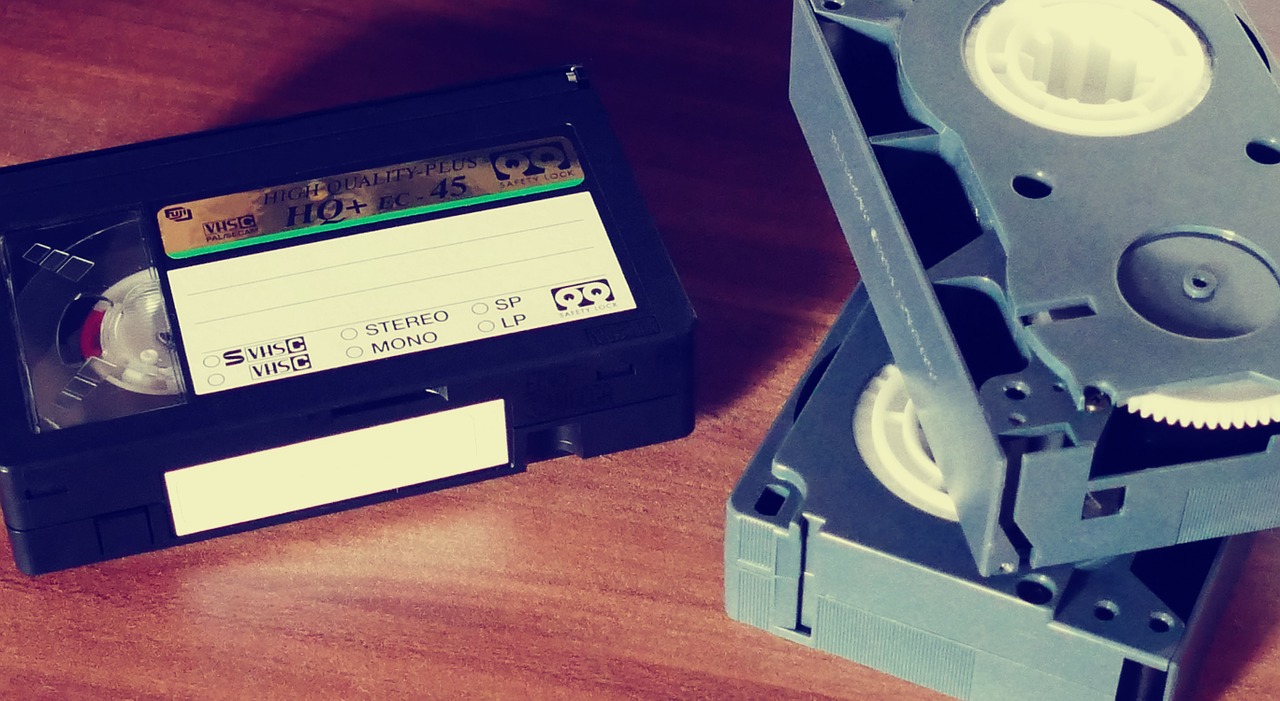It could record for up to six hours of viewing pleasure. It allowed you to fast-forward through the boring bits and thankfully it doesn’t scratch if you happen to drop it. You could always rely on it to begin playing where you paused it and it doesn’t come loaded with today’s seriously aggravating loading screens or scroll down menus. Today you can save this treasure from the discount bins of history thanks to VHS to DVD London or VHS to Digital London transfer services.
In those less complicated years, you can eliminate unwanted ads and trailers using scissors and a strategically positioned length of scotch tape! What dream gadget are we discussing? That’s right, the now fast vanishing VHS cassette tape and its VCR.
At one point every home had a VCR and a library of VHS tapes. Now, several generations of technology on, these once ubiquitous inhabitants everyone’s home entertainment centre is rapidly vanishing into history. But, what made them so popular and who developed them?
In The Beginning
Back in the day, the VHS or Video Home System to give it its full technical title was as big as digital recording and streaming services are today. For the first time, people were able to record significant events in their lives. It also revolutionised how we approach entertainment in our home.
Back in the early days of VHS, who would have thought you could watch one program while recording another? This was a significant pivot point is how we use home entertainment technology as well as a technological breakthrough.
While your VCR and those old VHS cassettes may seem to have been around at the time of the dinosaurs, it only disappeared from stores around a decade or so ago.
A Technological Breakthrough
The VHS recorder, together with the Video Home System (VHS) magnetic tape was developed by JVC also known as the Victor Company of Japan. JVC’s team achieved the distinction of unveiling a commercial VCR system in 1976. The letters VHS stood for Vertical Helical Scan, a salute to the system used to record sound and vision. Videotape is a completely linear approach to storing information. Following this development, both JVC and Panasonic launched their VHS format onto the market in late 1976.
While VHS’ main rival was the Betamax system developed by Sony, at one-point brands including RCA, MCA and Philips all produced competing disc systems and tape formats.
None of these competing systems succeeded in capturing market acceptance and never gained popularity. Eventually, VHS came to dominate the market, thanks to its advantages including its ability to fast-forward and rewind at a faster rate than its competitors. The VHS’s longer recording time and superior unthreading system were also drivers of its success.
VHS videocassettes reached their zenith with the commercial release of The Lion King. The VHS format dominated in-home recorded entertainment for twenty years until the DVD emerged as the next generation technology.
Consigned To Storage
By 2000, the DVD format had emerged as a much popular and convenient data storage format. Sales of pre-recorded and blank DVDs quickly exceed VHS sales and VHS tape sales went into rapid decline. By 2005, production of VCRs and VHS videocassettes was discontinued.
By the beginning of 2006, an estimated 90 million VCR machines were still in use in the USA alone. VHS tape enjoyed a distinguished record. The rapid adoption of VCRs and VHS tapes reshaped our approach to home entertainment.
Final Observation
While VCRs may be a vanishing breed and your collection of VHS tapes may have been banished to the garage, the history captured on your VHS tapes still matter. Our personal and family moments captured on videotape matter. You can save your precious memories for your children and grandchildren thanks to VHS to DVD London and VHS to Digital London professional transfer services. So, act today and save your video and audiotapes for posterity. After all, those snippets of life captured on audio and videotape are worth preserving.



 Bitcoin
Bitcoin  Ethereum
Ethereum  Tether
Tether  XRP
XRP  Solana
Solana  USDC
USDC  Cardano
Cardano  TRON
TRON  Lido Staked Ether
Lido Staked Ether  Avalanche
Avalanche  Toncoin
Toncoin